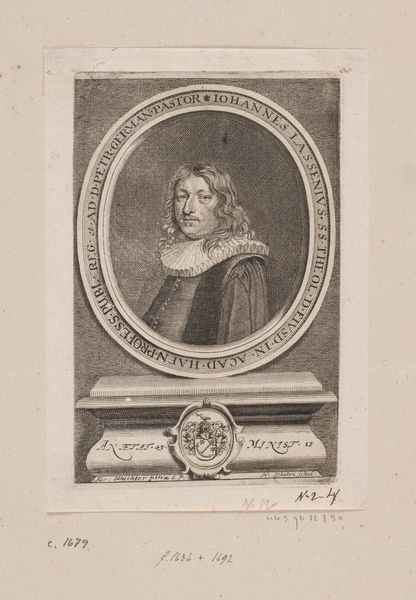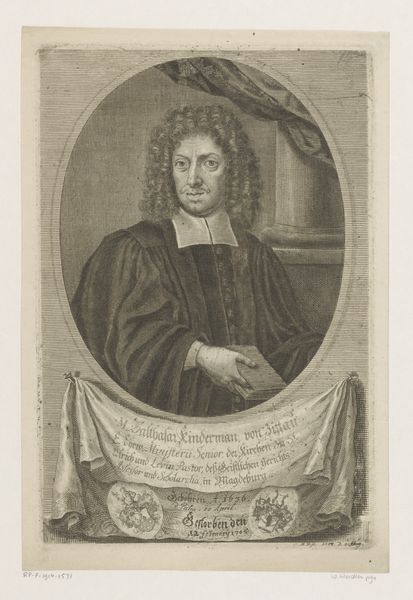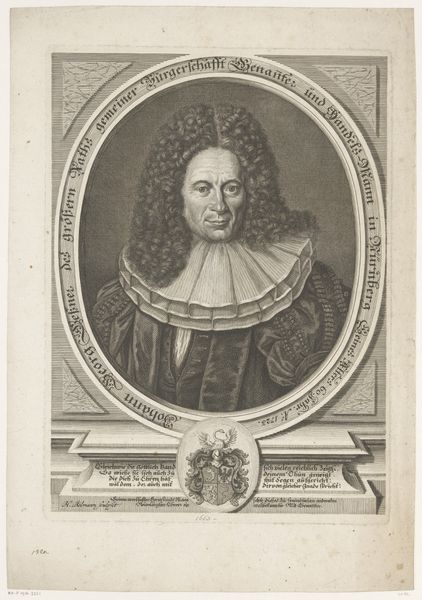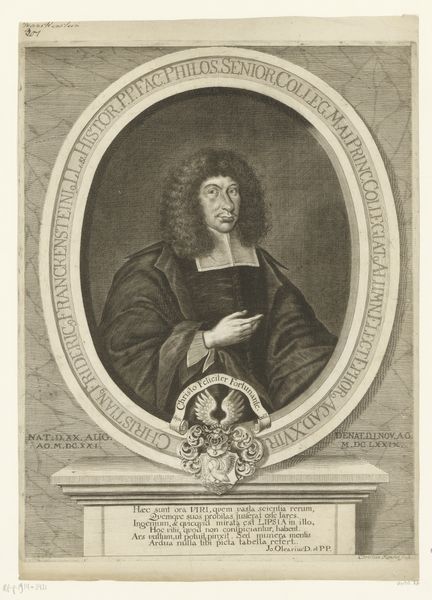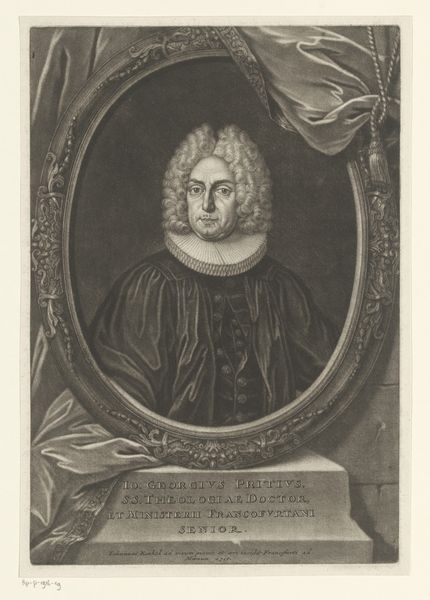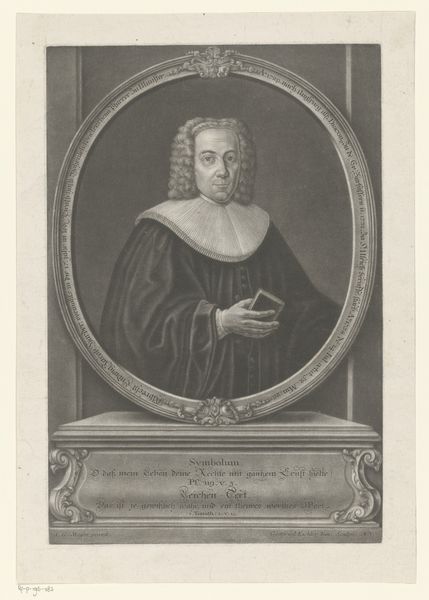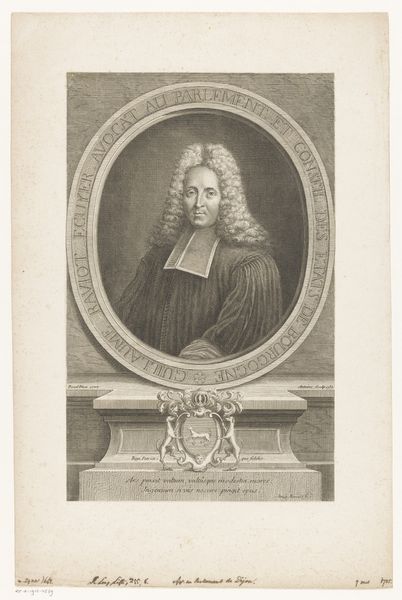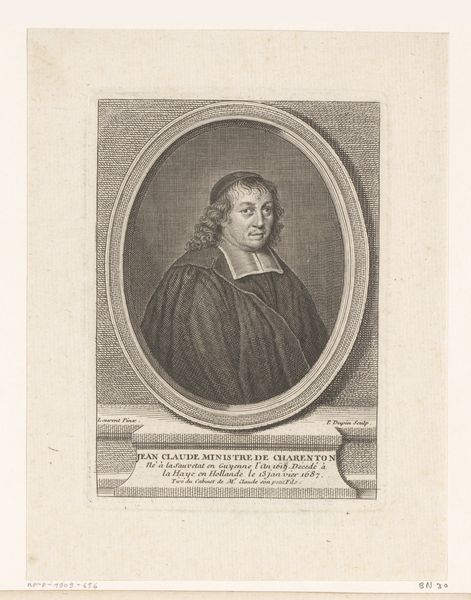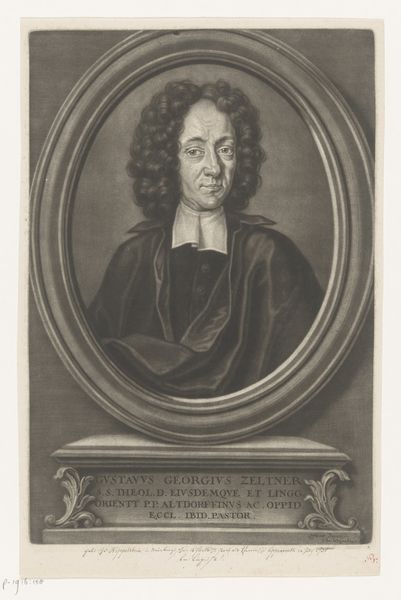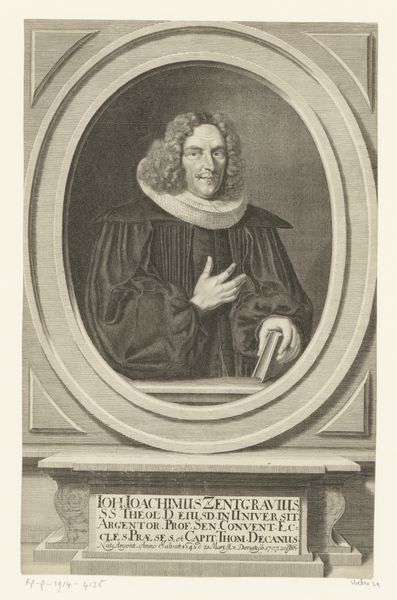
engraving
#
portrait
#
baroque
#
old engraving style
#
historical photography
#
line
#
history-painting
#
engraving
Dimensions: height 237 mm, width 162 mm
Copyright: Rijks Museum: Open Domain
Curator: Looking at this portrait, the overwhelming sensation for me is one of carefully maintained dignity, but also of quiet isolation. The somber tones contribute to a reserved sensibility. Editor: This is Jacob Folkema’s engraving of Humphrey Prideaux, executed somewhere between 1702 and 1767, now held here at the Rijksmuseum. As Dean of Norwich, Prideaux represents a pivotal figure in the Church of England during a time of immense social and intellectual upheaval. Curator: That ecclesiastical identity comes across strongly. There’s something almost archetypal about his garments, and the symbolic weight of that book he holds. It resonates across centuries, representing faith and learned authority. Editor: The portrait's production as an engraving also speaks volumes about its purpose. These images were circulated widely, reinforcing Prideaux's position but also promoting the values he stood for within a broader public sphere. Curator: Indeed, that dissemination is crucial. Engravings like this weren’t merely commemorative; they shaped perception, turning Prideaux into a symbol, even an ideal. His likeness becomes a signifier for stability during unstable times. Editor: Considering the historical moment, it’s interesting that the artist uses the trappings of Baroque portraiture – the ornate frame, the weighty robes – yet also employs a relatively straightforward style that underscores the sitter’s scholarly focus. This isn't just flattery; it's the depiction of moral authority. Curator: It’s in the eyes, isn’t it? A sort of steely composure… But it feels curated. A projected image as much as an accurate representation. I see power dynamics made visual. Editor: Power definitely plays a role, particularly in an era grappling with evolving notions of religious and intellectual leadership. This piece prompts us to ask how figures like Prideaux crafted their public image, and what tools were at their disposal. Curator: So it moves beyond simple representation. The engraving holds complexities about faith, societal image construction, and institutional power, all converging in this thoughtful visual statement. Editor: Absolutely. Examining Folkema’s work offers insight not only into Prideaux himself, but into the function of imagery within social history. The image, itself, is a record of cultural memory.
Comments
No comments
Be the first to comment and join the conversation on the ultimate creative platform.
